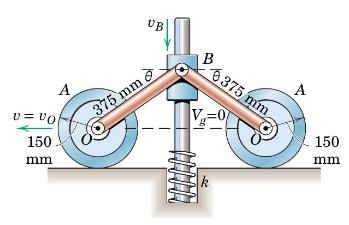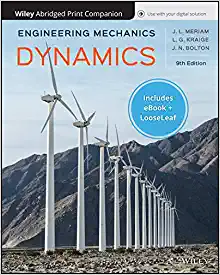In the mechanism shown, each of the two wheels has a mass of (30 mathrm{~kg}) and a
Question:
In the mechanism shown, each of the two wheels has a mass of \(30 \mathrm{~kg}\) and a centroidal radius of gyration of \(100 \mathrm{~mm}\). Each link \(O B\) has a mass of \(10 \mathrm{~kg}\) and may be treated as a slender bar. The 7-kg collar at \(B\) slides on the fixed vertical shaft with negligible friction. The spring has a stiffness \(k=30 \mathrm{kN} / \mathrm{m}\) and is contacted by the bottom of the collar when the links reach the horizontal position. If the collar is released from rest at the position \(\theta=45^{\circ}\) and if friction is sufficient to prevent the wheels from slipping, determine \((a)\) the velocity \(v_{B}\) of the collar as it first strikes the spring and (b) the maximum deformation \(x\) of the spring.

Step by Step Answer:






